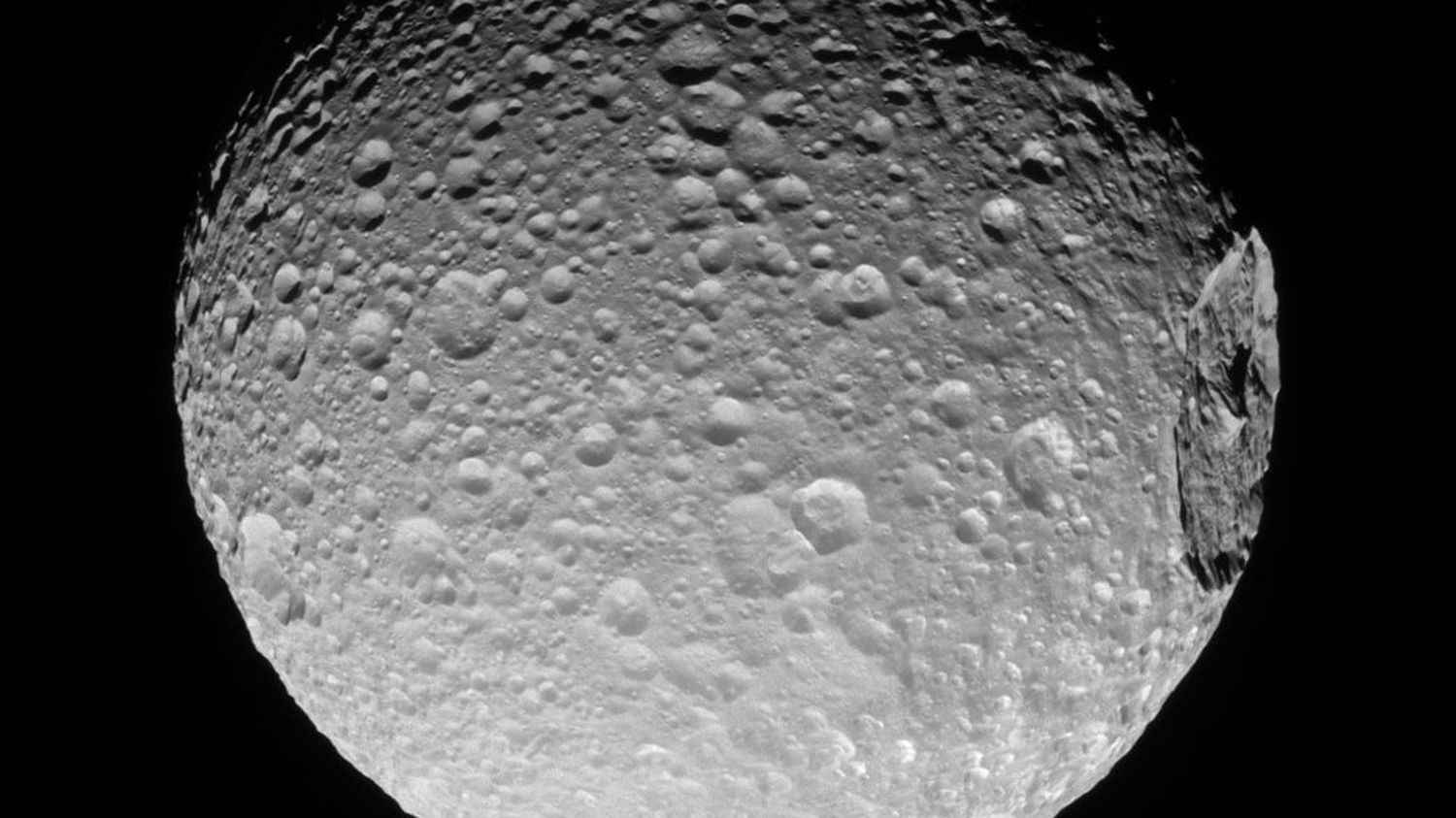Earth is not the only planet to have oceans. A pocket of water has been spotted under the surface of a natural satellite of Saturn.
It is not only on Earth that there are oceans. Researchers have just established that a large pocket of liquid water is hiding under the surface of a small moon that revolves around Saturn. Explanations with Mathilde Fontez, editor-in-chief of the magazine Epsiloon.
franceinfo: Introduce us to this moon of Saturn…
Mathilde Fontez : This moon of Saturn is called Mimas. It is tiny, almost 10 times smaller than ours. Seen from the outside, there is nothing to suggest that it could harbor an ocean. Its surface is full of craters, including a huge one that makes it look like the Death Star of star wars. She looks totally frozen, frozen. And yet, yes: it must have enough heat to shelter an ocean under its crust.
How did scientists discover it?
Thanks in particular to data from the Cassini-Huygens mission. This probe explored the Saturn system from 1997 to 2017 before crashing into this giant planet. She measured a curious oscillation of the moon Mimas in its orbit, an indication that there would be liquid matter inside. A team from Purdue University in the United States has just taken all of this data and concluded the presence of an ocean. It would extend to about thirty kilometers under the surface of Mimas.
Is this the first time that we have discovered a hidden ocean like this?
No, there is also an ocean under the icy crust of Enceladus, another moon of Saturn. They have also been spotted under the surface of satellites of Jupiter (the other gas giant, the largest planet in our solar system): Europa, Ganymede, and Callisto. These discoveries show the full impact of tidal forces in the structure of the bodies of the solar system: the enormous gravity of the giant planets kneads the interior of their satellites, until they create enough heat to obtain water.
And when astrophysicists see water in its liquid state somewhere in space, they immediately think of the possibility of extraterrestrial life. On Earth, we know that wherever there is water, there is life, even in the most acidic or dark places. Our planet is the only one with liquid water on the surface, but it is not the only one with an ocean. It therefore has other potential pockets of life in our solar system.
Can we explore them?
This is the goal of a mission that will take off this year, in the spring: the Juice mission, from the European Space Agency. She will study the oceans of Enceladus, Ganymede and Europa (the moons of Jupiter). But we will have to wait a bit: it will not arrive there in 2034.
To go further
https://agupubs.onlinelibrary.wiley.com/doi/10.1029/2022GL100516
